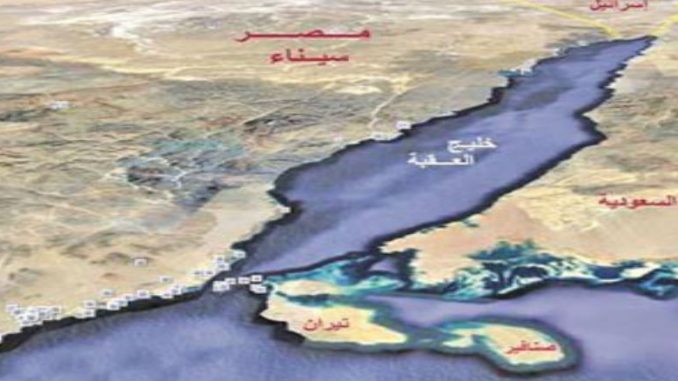
The Egyptian government approved the maritime border deal that transfers Tiran and Sanafir Islands to Saudi Arabia despite a legal dispute over the deal.
According to an e-mailed statement, the government referred the agreement, which is currently being disputed in Egyptian courts, to parliament for ratification.
In this context, Khaled Ali, a lawyer who filed the lawsuit in June to annul the deal, said” The government’s latest move showed “the collapse of the state of law and the constitution.”
He also added, “The decision that the parliament is going to issue is void and the people should defend their land with all legitimate means against this tyrant regime that doesn’t respect law or judiciary.”
The maritime border demarcation agreement was signed in April between Egypt and Saudi Arabia during King Salman’s visit to Egypt.
On June 20, 2016, Egypt Administrative Court ruled the invalidity of the controversial demarcation agreement that stipulates the transfer of Tiran and Sanafir islands to Saudi Arabia.
A number of lawsuits were filed in an attempt to nullify the agreement. The administrative court voided the accord in June after a lawsuit was filed against it, saying Egyptian sovereignty over the islands held and could not be given up.
In response, the Egyptian government appealed against the administrative court’s nullification of the al-Sisi plan to cede control of the two Red Sea Islands to Saudi Arabia.
Last month, Egypt’s Administrative Court confirmed the ruling that nullifies the transfer of the two Red Sea islands of Tiran and Sanafir to Saudi Arabia.
The court ruled that the government should abide by its previous verdict not to place the two islands in the Saudi waters.
The court is scheduled to issue its final verdict on 16 January.
The controversial agreement that gave away the two strategic islands of Tiran and Sanafir to Saudi Arabia has led to massive criticism and outrage among the Egyptians. Critics, journalists, and activists accused Abdel Fattah al-Sisi of “selling Egypt” to Saudi Arabia in return for financial aid.
In response, thousands of Egyptians took to the streets in protests on April 15 (Land Day) and April 25 (Sinai Liberation Day) against the agreement, calling for the “Downfall of the Regime.”
The demonstrations were the first huge movement against the al-Sisi regime that included different political affiliations and groups.
The Egyptian security forces led arrest campaigns of activists and journalists who opposed the transfer of the islands.
The Egyptian courts have fined tens of the protesters while others were handed down prison sentences that ranged from two to five years. In addition, a court sentenced seven defendants to eight years in prison each and fined them.
On the other hand, al-Sisi defended the agreement in a televised speech in April, saying that “Egypt does not sell its land to anyone and it does not take anyone’s land.”
Moreover, the Egyptian cabinet assured in a previous statement that the strategic islands are Saudi, adding that Saudi Arabia requested Egypt to protect them in 1950, and they have been under Egypt’s control since then.
The two Red Sea islands, which are strategically significant as they both control maritime activity in the Gulf, are located at the Gulf of Aqaba.
The Tiran Island is located in the Gulf of al-Aqaba, about 5 or 6 km from the Sinai Peninsula, and it has a total area of about 80 square km. Sanafir Island lies to the east of Tiran with a total area of 33 square km.



